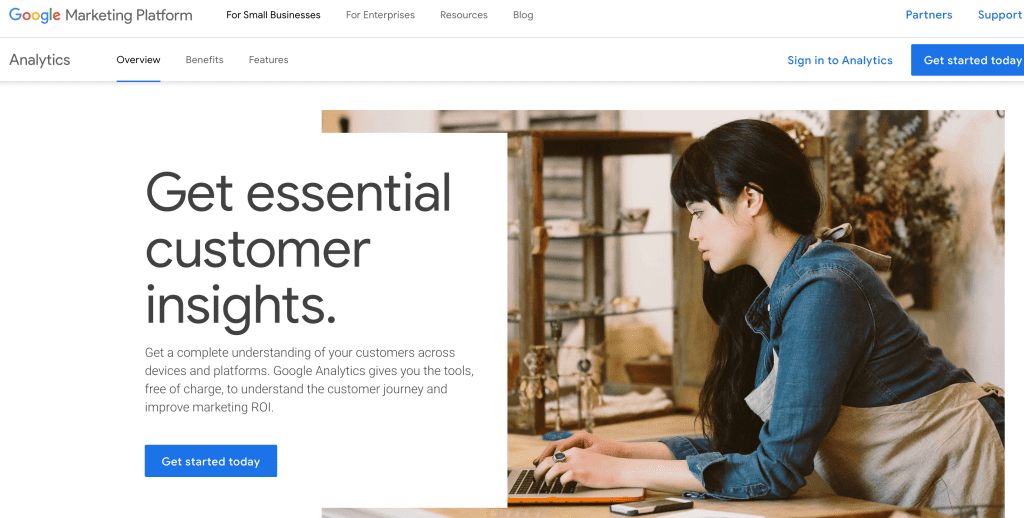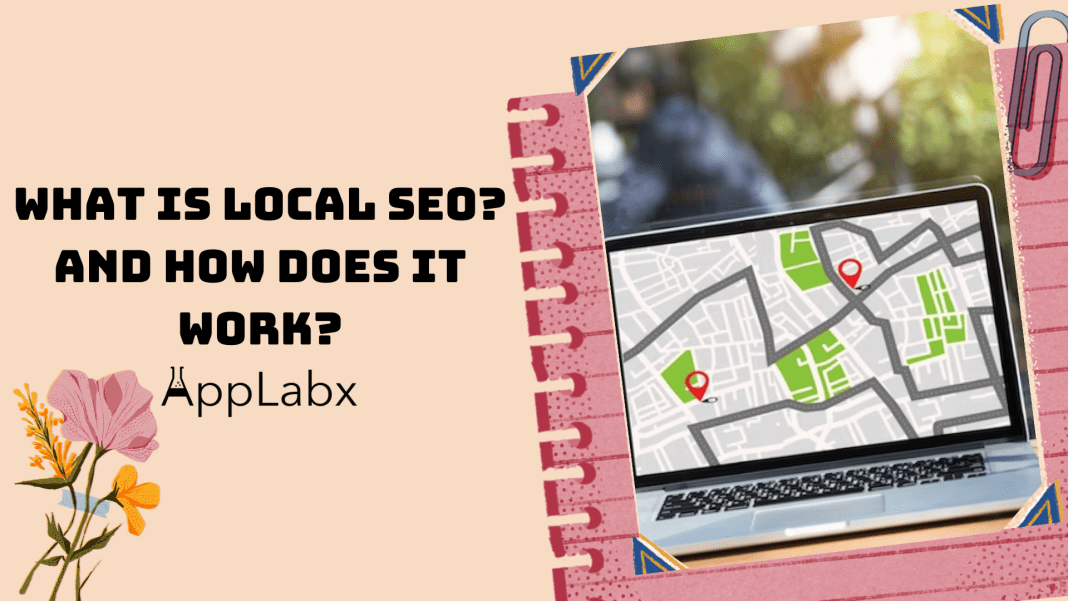Key Takeaways
- Localized Keywords Power Success: Tailor your digital presence with locally optimized keywords to align with user intent, enhancing visibility in local searches.
- Mobile-Centric Strategies Rule: Prioritize mobile optimization for seamless user experiences, catering to the surge in mobile searches and dominating the local landscape.
- Future-Proof Your Strategy: Anticipate trends like voice search dominance and augmented reality integration to stay ahead, ensuring your Local SEO strategy evolves with the dynamic digital landscape.
In an era where online visibility can make or break a business, mastering the art of Local SEO has become an indispensable component of digital success.
As the digital landscape continues to evolve, the quest for local dominance is more crucial than ever.
So, what exactly is Local SEO, and how does it work its magic to propel businesses into the coveted spotlight within their communities?

Understanding Local SEO
Local SEO, an acronym for Local Search Engine Optimization, is the strategic practice of enhancing a business’s online presence to attract and engage local customers.
This nuanced approach to SEO is tailored specifically for businesses catering to local markets, making it an indispensable tool for brick-and-mortar establishments, service providers, and regional enterprises.
Imagine this: You own a charming cafe nestled in the heart of a bustling neighbourhood.
You’ve crafted the perfect ambience, and curated a delightful menu, but how do you ensure that your potential customers in the vicinity are aware of your existence?
This is where Local SEO swoops in as the unsung hero of your digital marketing strategy.
A Comprehensive Exploration
In this comprehensive exploration, we’ll unravel the intricacies of Local SEO, dissecting its fundamental components and uncovering the mechanisms that propel businesses from the shadows into the limelight of local search results.
From the crucial role of Google My Business optimization to the art of weaving local keywords seamlessly into your content, we’ll leave no stone unturned.
But Local SEO isn’t a one-size-fits-all solution; it’s a dynamic landscape that demands a keen understanding of local search intent.
We’ll delve into the significance of deciphering the unique language your community uses when searching online, equipping you with the knowledge to tailor your content and online presence accordingly.
Local SEO and Mobile Optimization
As the digital realm becomes increasingly mobile-centric, we’ll explore the symbiotic relationship between Local SEO and mobile optimization.
Picture this: A potential customer is strolling through your neighbourhood, craving a cup of coffee, and frantically searching for the nearest café on their smartphone.
Will your business pop up in their search results?
We’ll guide you through the intricacies of ensuring your website is not just mobile-friendly but a beacon that beckons customers through your doors.
Local SEO Strategies
But Local SEO is not a solitary endeavour; it thrives in synergy with social media.
We’ll uncover the strategies that harness the power of platforms like Facebook, Instagram, and X (formerly Twitter) to amplify your local visibility.
From user-generated content to cultivating positive online reviews, we’ll navigate the social landscape, ensuring your business leaves an indelible mark in the digital realm.
Throughout this journey, we’ll also shed light on the metrics that matter, providing insights into tracking and measuring the success of your Local SEO endeavours.
What good is a strategy if you can’t quantify its impact? From setting up Google Analytics for local tracking to deciphering the nuances of local search rankings, we’ll empower you with the tools to gauge your digital triumphs.
Future of Local SEO
What emerging trends and technologies should be on your radar?
How will voice search revolutionize local optimization?
Join us on this expedition through the evolving realms of Local SEO, where we decode the present and forecast the future.
So, fasten your digital seatbelt, for we are about to embark on a journey into the heart of Local SEO – demystifying its workings, uncovering its secrets, and equipping you with the knowledge to chart a course towards local digital triumph.
Welcome to the definitive guide on “What is Local SEO? And How Does It Work?” – your compass in the digital wilderness.
But, before we venture further, we like to share who we are and what we do.
About AppLabx
From developing a solid marketing plan to creating compelling content, optimizing for search engines, leveraging social media, and utilizing paid advertising, AppLabx offers a comprehensive suite of digital marketing services designed to drive growth and profitability for your business.
AppLabx is well known for helping companies and startups use Local SEO to drive web traffic to their websites and web apps.
At AppLabx, we understand that no two businesses are alike. That’s why we take a personalized approach to every project, working closely with our clients to understand their unique needs and goals, and developing customized strategies to help them achieve success.
If you need a digital consultation, then send in an inquiry here.
What is Local SEO? And How Does It Work?
- Key Components of Local SEO
- Importance of Local Keywords
- Mobile Optimization for Local Searches
- Local SEO and Social Media
- Tracking and Measuring Local SEO Success
- Future Trends in Local SEO
1. Key Components of Local SEO

Google My Business Optimization
Google My Business (GMB) stands as the cornerstone of any effective Local SEO strategy, serving as the digital storefront for businesses on Google.
46% of all Google searches are for local businesses or services, emphasizing the critical role GMB plays in local visibility.
Here’s a detailed breakdown of GMB optimization:
- Claiming and Verifying Your Business:
- Importance: Unclaimed businesses risk misinformation and loss of control over their online narrative.
- Example: A study by Moz found that claiming your Google My Business profile is your first step to local optimization, influencing local pack rankings.
- Completing Business Information:
- Importance: A complete GMB profile fosters trust and provides users with accurate information.
- Example: Customers are 70% more likely to visit and 50% more likely to consider purchasing from businesses with a complete Business Profile.
- Managing Customer Reviews:
- Importance: Positive reviews enhance credibility, while effective handling of negative reviews demonstrates responsiveness.
- Example: According to a survey, 87% of consumers read online reviews for local businesses before making a purchasing decision.
On-Page SEO for Local Search
On-page optimization tailored for local searches involves fine-tuning website elements to align with local intent.
- Optimizing Meta Tags with Local Keywords:
- Importance: Meta tags provide context to search engines, guiding them in understanding the local relevance of content.
- Example: A study by Backlinko found that URLs that contain terms similar to a keyword have a 45% higher click-through rate compared to URLs that don’t contain a keyword.
- Creating Location-Specific Content:
- Importance: Tailoring content to local nuances not only attracts local audiences but also signals relevance to search engines.
- Example: 80% of the companies believe that location-specific optimization will be a crucial factor to their prospects.
- NAP (Name, Address, Phone Number) Consistency:
- Importance: Consistent NAP information across online platforms builds trust and enhances local search visibility.
- Example: A study found that NAP consistency is crucial for local SEO because it helps search engines understand your business identity and location.
Local Link-Building Strategies
Building a robust network of local links reinforces a business’s authority within its community.
- Building Local Citations:
- Importance: Citations from reputable local directories validate a business’s existence and contribute to local search rankings.
- Example: According to a study, citations are an important signal as to whether key business information is correct and that location is the best answer for a local searcher’s relevant query.
- Earning Backlinks from Local Websites:
- Importance: Backlinks from local authorities strengthen a business’s online authority, signalling trustworthiness to search engines.
- Example: Websites with high-quality backlinks are more likely to rank higher in search engine results, leading to increased visibility and traffic.
- Joining Local Business Associations:
- Importance: Association memberships contribute to a business’s local relevance, positively influencing local search visibility.
2. Importance of Local Keywords
Local keywords serve as the linchpin in connecting businesses with their local audience in the vast landscape of online searches.
Understanding the significance of incorporating local keywords into your SEO strategy is pivotal for businesses seeking to enhance their local visibility.

Understanding Local Search Intent
- Importance of Localized Searches:
- 46% of all Google searches are looking for local information.
- Example: Consider a user searching for “best coffee shops near me” or “plumber in [city].” These queries reflect localized search intent, emphasizing the need for businesses to align their content accordingly.
- Local Search Behavior:
- Nearly all consumers (97 per cent) now use online media (websites, social media) when researching products or services in their local area.
- Example: A restaurant in San Francisco optimizing for keywords like “San Francisco dining” is more likely to appear in search results when users seek local dining options.

Conducting Keyword Research for Local SEO
- Tailoring Keywords to Local Nuances:
- Importance: Local keyword research involves understanding the unique language and phrases used by the local community.
- Example: A florist in London might discover that locals often search for “bouquet delivery London” rather than generic terms like “flower delivery.”
- Tools for Local Keyword Research:
- Tools like Google Keyword Planner, Moz, and Semrush offer insights into local search volumes and keyword competitiveness.
- Example: By leveraging these tools, a small business in Toronto could identify high-volume local keywords like “Toronto boutique clothing” to optimize its online presence.

Integrating Local Keywords in Content and Meta Tags
- Seamless Integration for Relevance:
- Importance: Incorporating local keywords seamlessly into website content and meta tags signals to search engines that a business is relevant to local searches.
- Example: If a real estate agency in Los Angeles optimizes its website with phrases like “Los Angeles homes for sale,” it increases the likelihood of appearing in local property search results.
- Enhancing User Experience:
- 72% of consumers who did a local search visited a store within five miles, underscoring the importance of local keywords in enhancing user experience.
- Example: A bakery in Chicago strategically using local keywords in its website content may attract foot traffic from nearby residents searching for “Chicago bakery.”

Impact on Conversion Rates and Revenue
- Local Optimization and Conversions:
- Businesses with complete GMB listings are 70% more likely to attract location visits from browsing online, translating to higher conversion rates.
- Example: A local gym optimizing for “fitness classes [city]” may experience increased sign-ups from users specifically seeking local fitness options.
- Revenue Growth through Local SEO:
- Importance: Localized searches often translate into real-world transactions. Businesses that appear in local search results are well-positioned to convert online interest into offline revenue.
- Example: An electronics store in Miami utilizing local keywords in its online strategy can tap into the significant market of consumers searching for “Miami electronic retailers,” potentially boosting in-store sales.
Adapting to Voice Search Trends
- Rise of Voice Search:
- Forecasts suggest that by 2024, the number of digital voice assistants will reach 8.4 billion units, highlighting the growing significance of voice-activated queries.
- Example: As voice searches often have a local context, businesses optimizing for phrases like “voice-activated home systems in [city]” can stay ahead in the voice search landscape.
- Local SEO and Voice Commands:
- Importance: Integrating local keywords into content ensures that businesses are discoverable when users utilize voice commands to find nearby products and services.
- Example: A local pizzeria optimizing for voice search may benefit from users saying, “Find pizza places near me.”
3. Mobile Optimization for Local Searches
The factor of mobile optimization has become the linchpin of local SEO, given the exponential rise in mobile device usage for online searches.

Importance of Mobile-Friendly Websites
- Mobile Dominance in Online Searches:
- Local Intent in Mobile Searches:
- According to Google, 30% of mobile searches are related to location, emphasizing the local intent inherent in mobile search behaviour.
- Mobile-First Impact:
Implementing Responsive Design
- Responsive Design and User Experience:
- Importance: Responsive design ensures a seamless user experience across various devices, a critical factor in retaining visitors and encouraging engagement.
- Example: Starbucks’ website adjusts effortlessly to different screen sizes, offering a consistent experience whether accessed on a desktop or a mobile device.
- Impact on Bounce Rates:
- As page load time goes from one second to five seconds, the probability of bounce increases by 90%. Responsive design contributes to faster load times, reducing bounce rates.
- Responsive Design in Action:
- Example: Amazon’s website is a prime example of responsive design, adapting seamlessly to screens of various sizes. This approach ensures that users can easily navigate and make purchases from their mobile devices.
Ensuring Quick Page Loading Times for Mobile Users
- Impact of Page Speed on Rankings:
- Google has explicitly stated that speed is now used as a ranking factor for mobile searches, underlining the significance of fast-loading mobile pages.
- User Expectations for Mobile Speed:
- A study by Google found that 53% of visits are abandoned if a mobile site takes longer than 3 seconds to load, highlighting the impatience of users on mobile devices.
- Mobile Page Speed Impact:
- Example: The BBC implemented AMP (Accelerated Mobile Pages) to enhance page speed for mobile users.
Mobile SEO and Local Content
- Creating Location-Specific Content:
- Importance: Tailoring content to local audiences enhances relevance in mobile searches where users often seek immediate, location-specific information.
- Example: Yelp’s mobile app provides users with location-based recommendations, ensuring that users receive information relevant to their current context.
- Localized Keywords in Mobile Content:
- 56% of local businesses haven’t claimed their Google My Business listing, missing out on opportunities for local mobile visibility.
- Localized Content Success:
- Example: Domino’s Pizza effectively uses localized content in its mobile app, allowing users to find the nearest store, track their delivery in real-time, and access exclusive local promotions.
Voice Search and Local Optimization
- Rise of Voice Search:
- Forecasts suggest that by 2024, the number of digital voice assistants will reach 8.4 billion units, highlighting the growing significance of voice-activated queries.
- Local Context in Voice Queries:
- Importance: Voice searches often have a local context, making it imperative for businesses to optimize for local queries in their mobile content.
- Example: A user asking their voice-activated device, “Find Italian restaurants near me,” expects relevant and immediate local results.
- Local Voice Search Integration:
- Example: Google’s voice search functionalities are designed to understand and respond to local queries effectively. Asking, “Where is the nearest gas station?” prompts Google to provide location-specific results.
4. Local SEO and Social Media
In the dynamic world of digital marketing, the synergy between Local SEO and social media has emerged as a powerful catalyst for enhancing local visibility, engaging with audiences, and building a robust online presence.

Leveraging Social Media for Local Visibility
- Social Signals in Search Rankings:
- Importance: Social signals, such as likes, shares, and comments on social media platforms, contribute to search engine algorithms, influencing local search rankings.
- Social Signals Impact:
- Example: A local bakery regularly posts updates about new menu items, events, and community engagement on its Facebook page. The increased social engagement contributes to higher local search rankings, drawing more customers to the bakery.
Encouraging User-Generated Content and Reviews
- User-Generated Content (UGC) and Local SEO:
- Importance: UGC, such as customer reviews, photos, and check-ins, serves as valuable content that enhances a business’s online presence and credibility.
- According to BrightLocal, 87% of consumers read online reviews for local businesses in 2020, emphasizing the influence of UGC on local purchasing decisions.
- UGC Success:
- Example: A local hotel actively encourages guests to share their experiences on Instagram, using a dedicated hashtag. This UGC not only boosts the hotel’s social media presence but also contributes to positive local reviews and increased bookings.
Integrating Social Media Signals into Local Search Rankings
- Google My Business and Social Integration:
- Importance: Integrating social media profiles into the Google My Business (GMB) listing enhances the overall online presence and authority of a business.
- GMB and Social Integration:
- Example: A local restaurant links its Instagram and Facebook profiles to its GMB listing, providing users with additional avenues to explore the establishment. This integrated approach contributes to a comprehensive local online presence.
Harnessing Social Media Advertising for Local Reach
- Geo-Targeted Social Ads:
- Importance: Social media platforms offer powerful geo-targeting capabilities, allowing businesses to create highly targeted ads for specific local audiences.
- Geo-Targeted Ads Success:
- Example: A local spa runs a Facebook ad campaign specifically targeting users within a 10-mile radius. The campaign’s success is evident in increased website visits, appointment bookings, and foot traffic.
Local SEO Benefits of Social Media Engagement
- Increased Brand Visibility:
- Importance: Active engagement on social media platforms boosts brand visibility, creating more touchpoints for potential customers and reinforcing local brand awareness.
- Example: A local bookstore engages with the community on X (formerly Twitter) by sharing book recommendations, and event updates, and responding promptly to customer inquiries. This consistent engagement contributes to increased local brand recognition.
- Social Engagement:
- 90% of consumers are more likely to buy from a company after a positive social media interaction with them, underlining the impact of social engagement on brand advocacy.
Local SEO and Social Media Best Practices
- Consistent NAP Across Platforms:
- Importance: Ensuring a consistent Name, Address, and Phone Number (NAP) across social media profiles and local directories enhances local search visibility and reinforces business credibility.
- Example: A local hardware store maintains uniform NAP information on its Facebook, Yelp, and X (formerly Twitter) profiles, contributing to accurate local search results.
- Engagement in Local Groups and Communities:
- Importance: Actively participating in local social media groups and communities fosters community engagement and enhances a business’s local authority.
- Example: A neighbourhood bakery joins and engages in local Facebook groups, sharing baking tips, and promotions, and participating in discussions. This engagement contributes to positive local sentiment and increased foot traffic.
5. Tracking and Measuring Local SEO Success
Measuring the efficacy of a Local SEO strategy is indispensable for businesses seeking to refine their approach, optimize performance, and achieve sustained success in the digital landscape.

Essential Metrics for Local SEO Success
- Local Search Rankings:
- Importance: Monitoring your business’s position in local search results is a foundational metric, indicating visibility and competitiveness within your geographic area.
- Example: Tools like Moz Local and BrightLocal provide insights into local search rankings, helping businesses track their position and identify areas for improvement.
- Google My Business (GMB) Insights:
- Importance: GMB provides invaluable data on how users find your business on Google, including search queries, customer actions, and the geographic areas your customers come from.
- Example: A local restaurant can use GMB Insights to discover that most customers find them through searches like “best pizza in [city]” and adjust their content accordingly.
- Website Traffic and Conversions:
- Importance: Tracking website traffic from local searches and monitoring conversion rates provides a comprehensive view of how well your website is converting local visitors into customers.
- Example: Google Analytics offers insights into website traffic sources, enabling businesses to see the percentage of visitors originating from local searches.

Tools for Local SEO Measurement
- Google Analytics:
- Importance: A cornerstone for web analytics, Google Analytics provides a wealth of data on website traffic, user behavior, and conversions.
- Example: A local service provider can use Google Analytics to see the percentage increase in website visits from users in the targeted local area after implementing a Local SEO strategy.
- Google Search Console:
- Importance: This tool offers insights into how Google views your website, highlighting issues that may impact local search visibility.
- Example: A local business can use Search Console to identify crawl errors, fix issues related to mobile usability, and ensure their website is optimized for local searches.
- Local SEO Tools (Moz Local, BrightLocal, Yext):
- Importance: Specialized tools offer features like local citation tracking, online review monitoring, and competitive analysis, providing a comprehensive view of your local online presence.
- Example: A retail store can use BrightLocal to track the accuracy of its business information across online directories, ensuring consistent NAP details for improved local search rankings.

User Engagement Metrics
- Click-Through Rate (CTR):
- Importance: CTR measures the percentage of users who click on your website link after seeing it in search results, reflecting the relevance and attractiveness of your listing.
- Example: A local salon can experiment with different meta titles and descriptions, analyzing CTR data in Google Search Console to optimize their listing for higher engagement.
- User Reviews and Ratings:
- Importance: Positive online reviews not only influence local search rankings but also build trust and credibility among potential customers.
- Example: A local fitness studio can encourage satisfied customers to leave reviews on platforms like Google, Yelp, and Facebook, directly impacting their online reputation.
Local SEO Reporting Strategies
- Regular Performance Audits:
- Importance: Regularly auditing the performance of your Local SEO strategy allows businesses to identify areas of improvement, capitalize on successful tactics, and adapt to evolving search algorithms.
- Example: A local business can conduct quarterly reviews using tools like Moz or BrightLocal, adjusting its strategy based on changing search trends.
- Customized Reporting for Stakeholders:
- Importance: Tailoring your Local SEO reports to stakeholders’ specific needs and interests ensures effective communication and support for ongoing efforts.
- Example: A marketing manager may be interested in overall traffic and conversion metrics, while the business owner may focus on local search rankings and customer reviews.
Local SEO Benchmarks
- Benchmarking Against Competitors:
- Importance: Benchmarking your performance against local competitors provides context and insights into areas where improvement is needed.
- Example: A local bakery can analyze the online presence and performance metrics of competing bakeries to identify opportunities for differentiation and improvement.
The Impact of Local SEO on Business Growth
- Local SEO ROI:
- Importance: Understanding the return on investment (ROI) of your Local SEO efforts is crucial for demonstrating the tangible impact on business growth.
- Example: A local retail store can track the correlation between increased local search visibility and a rise in foot traffic and sales.
- Economic Impact of Local SEO:
- According to Google, 76% of people who search on mobile for something nearby visit a business within a day, underscoring the immediate economic impact of effective Local SEO.
6. Future Trends in Local SEO
Anticipating and adapting to emerging trends is essential for businesses aiming to stay ahead in the competitive landscape of Local SEO.

Voice Search Dominance
- Rise of Voice-Activated Queries:
- Trend Analysis: With the increasing prevalence of voice-activated devices, voice searches are projected to become a dominant force in local search.
- Optimizing for Conversational Queries:
- Implications: Businesses need to adapt their content to align with conversational queries as users are more likely to phrase voice searches in a natural, conversational manner.
- Example: A local restaurant optimizing for voice search might incorporate phrases like “Where can I find the best pizza near me?” into its content.
- Local Intent in Voice Commands:
- As voice searches often have local context, businesses should focus on integrating local keywords and providing immediate, relevant information in response to voice commands.
- Example: Google Assistant provides directions to the nearest gas station when a user says, “Find a gas station near me.”
Augmented Reality (AR) for Local Discovery
- AR Integration for Local Businesses:
- Trend Analysis: Augmented Reality is poised to revolutionize local discovery, enabling users to engage with businesses and attractions in their physical vicinity through AR applications.
- Example: An AR app allowing users to view restaurant menus, reviews, and promotions by simply pointing their smartphone at the establishment.
- Local Retail and AR Shopping Experiences:
- Implications: Retailers can leverage AR to provide immersive shopping experiences, allowing customers to visualize products in their own spaces before making a purchase.
- Example: A furniture store offering an AR app that enables customers to virtually place furniture items in their homes before deciding on a purchase.
- Enhanced Navigation with AR:
- AR can be utilized for improved navigation, helping users find local businesses, discover landmarks, and access real-time information overlaying the physical environment.
- Example: Google Maps integrates AR navigation to guide users with visual cues and directions overlaid on the live camera feed.
Zero-Click Searches and SERP Features
- Zero-Click Searches on the Rise:
- Trend Analysis: With the increasing prevalence of featured snippets and rich results, users are obtaining information directly from search engine results pages (SERPs), leading to more zero-click searches.
- Optimizing for Featured Snippets:
- Implications: Businesses must optimize their content to appear in featured snippets, providing concise and relevant information that answers common local queries.
- Example: A local travel agency optimizing for “best local vacation spots” to appear in the featured snippet, providing users with a quick overview.
- Local SEO Strategies Beyond Clicks:
- While clicks remain essential, businesses should also focus on enhancing their visibility through SERP features like knowledge panels, local packs, and reviews.
- Example: A local hotel optimizing its Google My Business listing to include high-quality images, customer reviews, and accurate business information for better visibility in local packs.
Ephemeral Content and Local Engagement
- Rise of Ephemeral Content:
- Trend Analysis: Ephemeral content, which is short-lived and disappears after a certain period, is gaining popularity on platforms like Instagram and Snapchat.
- 64% of marketers either already have incorporated Instagram Stories into their strategies or plan to.
- Local Events and Limited-Time Offers:
- Implications: Local businesses can leverage ephemeral content to promote time-sensitive events, flash sales, and exclusive offers to create a sense of urgency.
- Example: A local clothing store using Instagram Stories to announce a one-day flash sale and provide followers with a limited-time discount code.
- Boosting Local Engagement through Stories:
- Stories on platforms like Facebook and Instagram offer a way for businesses to engage with their local audience more authentically and interactively.
- Example: A local fitness studio sharing behind-the-scenes snippets, client testimonials, and workout tips through Instagram Stories to connect with the local community.
Local SEO for Multiple Platforms and Devices
- Multi-Platform Local SEO:
- Trend Analysis: Businesses should diversify their local SEO efforts across various platforms, including Google, Bing, Yelp, and emerging platforms relevant to their industry.
- 88% of consumers trust online reviews as much as personal recommendations from friends, emphasizing the significance of maintaining a consistent presence on multiple platforms.
- Cross-Device Optimization:
- Implications: With users accessing local information across devices, businesses should ensure a seamless experience by optimizing content for desktop, mobile, and tablet devices.
- Example: A local bakery’s website employs responsive designs to provide an optimal user experience regardless of the device used.
- Consistent NAP Information Across Platforms:
- Consistency in business Name, Address, and Phone Number (NAP) across all platforms is crucial for local search visibility and user trust.
- Example: A local clinic ensuring that its NAP details are consistent on Google, Yelp, and its official website for accurate and reliable information.
Ethical and Sustainable SEO Practices
- User Privacy and Data Ethics:
- Trend Analysis: With growing concerns about user privacy, businesses must prioritize ethical practices in collecting and using customer data for personalized local experiences.
- 85% of customers say that they will not do business with a company if they are worried about its data practices.
- Sustainable SEO for Local Businesses:
- Implications: Local businesses should integrate sustainable and environmentally friendly practices into their digital strategies, aligning with broader societal expectations.
- Example: A local grocery store showcasing its commitment to sustainability through online content, emphasizing eco-friendly products and practices.
- Local Community Engagement:
- Engaging with the local community, supporting local causes, and showcasing community involvement contribute to positive brand sentiment and loyalty.
- Example: A local bookstore organizing events, sponsoring local sports teams, and actively participating in community initiatives, sharing these efforts through its digital channels.
Conclusion
In the ever-expanding digital realm, where online visibility is paramount, Local SEO emerges as the compass guiding businesses through the intricate landscape of local searches.
Throughout this extensive exploration of “What is Local SEO? And How Does It Work?” we’ve delved into the foundational principles, key components, and emerging trends that define the dynamic world of localized search optimization.
Unlocking the Power of Local SEO
Local SEO is not merely a digital marketing strategy; it’s a potent tool that empowers businesses to connect with their local audience, enhance visibility, and foster meaningful relationships within their communities.
The journey begins with understanding the fundamental principles that underpin this specialized form of SEO, recognizing the importance of localized searches, and appreciating the nuances of user intent at the local level.
Key Components: Building Blocks for Success
As we navigated the key components of Local SEO, we unearthed the significance of accurate business information, the impact of online reviews and ratings, the role of localized content, and the pivotal importance of mobile optimization.
Businesses seeking local prominence must meticulously craft their online presence, ensuring consistency across platforms, and leveraging the power of positive user-generated content to build trust and credibility.
Local Keywords: Unveiling the Language of Your Community
The importance of local keywords emerged as a focal point, guiding businesses in deciphering the unique language and search behaviour of their local audience.
Through meticulous keyword research, seamless integration into content and meta tags, and an understanding of the shifting landscape of voice search, businesses can tailor their digital strategies to resonate with the specific needs and preferences of their community.
Mobile Optimization: Navigating the Mobile-First Era
In an era dominated by mobile devices, mobile optimization for local searches has become non-negotiable. From responsive design to swift page loading times, businesses must prioritize a user-centric approach to cater to the on-the-go habits of their local audience.
Adapting to voice search trends and harnessing the power of local keywords in mobile content ensures businesses stay ahead in the mobile-first landscape.
Social Media: A Dynamic Ally in Local SEO
Our exploration of the intersection between Local SEO and social media unveiled a symbiotic relationship, where social signals, user-generated content, and strategic engagement contribute to enhanced local visibility.
By integrating social media into their Local SEO strategies, businesses can not only boost their online presence but also actively engage with their local community, building a loyal customer base.
Measuring Success: A Data-Driven Odyssey
In the world of Local SEO, tracking and measuring success is not an afterthought but a continuous journey.
From local search rankings and Google My Business insights to user engagement metrics and website traffic, businesses must leverage analytics tools to gain actionable insights.
With regular performance audits, customized reporting, and a focus on user engagement, businesses can refine their strategies based on real-time data, ensuring a trajectory of sustained growth.
Embracing the Future: Navigating Tomorrow’s Trends Today
As we peer into the future, the landscape of Local SEO promises innovation and evolution.
From the dominance of voice search and augmented reality to the nuances of zero-click searches and the growing significance of ethical SEO practices, businesses must remain agile, adaptive, and forward-thinking.
By anticipating and embracing these future trends, businesses can position themselves as pioneers in the ever-evolving local search landscape.
Closing Thoughts: Crafting a Local Legacy
In conclusion, Local SEO is not a one-size-fits-all endeavour; it’s a dynamic and nuanced approach that demands a deep understanding of local communities, user behaviours, and emerging technologies.
As businesses embark on their Local SEO journey, armed with the insights garnered from this exploration, they have the opportunity not just to optimize for search engines but to weave a narrative that resonates with the hearts and minds of their local audience.
In the symphony of digital strategies, Local SEO plays a distinctive and resonant note, echoing the aspirations of businesses to be more than just entities on the web but integral members of the communities they serve.
So, let the journey into the world of Local SEO be not just a quest for online prominence but a testament to the enduring connections forged within the communities that form the beating heart of every business endeavour.
If you are looking for a top-class digital marketer, then book a free consultation slot here.
If you find this article useful, why not share it with your friends and business partners, and also leave a nice comment below?
We, at the AppLabx Research Team, strive to bring the latest and most meaningful data, guides, and statistics to your doorstep.
To get access to top-quality guides, click over to the AppLabx Blog.
People also ask
How is local SEO different from SEO?
Local SEO is a specialized subset of SEO, that emphasises geographical relevance. While SEO optimizes for global visibility, local SEO tailors strategies to enhance a business’s presence in specific locations, leveraging tactics like localized keywords, Google My Business optimization, and community engagement for targeted regional impact.
What is SEO and how does it work?
SEO, or Search Engine Optimization, is the practice of enhancing a website’s visibility on search engines. It works by optimizing content, using relevant keywords, improving website structure, and earning backlinks. The goal is to rank higher on search results, increasing organic traffic and online presence.
How to do Google local SEO?
To excel in Google Local SEO, optimize your Google My Business listing with accurate information, encourage customer reviews, use relevant local keywords, and build local citations. Prioritize mobile optimization, engage in social media, and monitor analytics for continuous improvement in local search rankings.




































